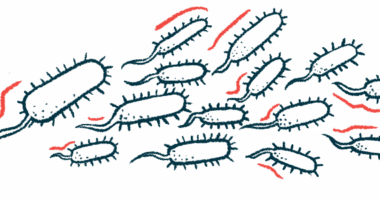Blood Cancer Unexpectedly Triggers CAD in Patient

A man’s cold agglutinin disease (CAD) was caused by a type of blood cancer called B-lymphoblastic leukemia, according to a recent case report.
While cancer is a known cause of CAD, this type of cancer was unexpected, the researchers noted, adding that a full work-up is needed to ensure a patient receives proper care for both conditions.
The case report, “Unexpected presentation of cold agglutinin syndrome with B-acute lymphoblastic leukemia,” was published in the journal Blood.
CAD is a rare autoimmune disorder in which self-reactive antibodies, or autoantibodies, attack and destroy red blood cells at low temperatures. These autoantibodies, called cold agglutinins, bind to red blood cells, causing them to clump together and ultimately die.
CAD can be classified as either a primary or secondary condition. While primary CAD occurs in the absence of other known health conditions, secondary CAD typically occurs in association with other illnesses, such as infections, other autoimmune disorders, or cancer.
In this case report, a 44-year-old man reported to an emergency department in Texas with sudden shortness of breath (dyspnea) and fatigue.
Results from a blood test showed the man had normocytic anemia. This happens when a person has fewer red blood cells than usual, and those blood cells have insufficient amounts of hemoglobin — the protein they use to carry oxygen throughout the body.
His blood also showed red blood cell agglutination, or clumping. Additional testing revealed he had several other signs of CAD.
His blood had elevated levels of lactate dehydrogenase — a marker of tissue damage — and bilirubin, a waste product produced in the liver when red blood cells are broken down. Haptoglobin levels also were low — another indication of red blood cell destruction. Haptoglobin is a protein that normally binds to free hemoglobin, which is released from red blood cells when they die.
An antiglobulin test (Coombs test), which measures whether there are antibodies attached to red blood cells, came back positive, as did a test for cold agglutinin antibodies.
The patient underwent a bone marrow biopsy, where it was discovered unexpectedly that he had B-lymphoblastic leukemia — a cancer of the white blood cells that live in the bone marrow. This type of cancer causes too many immature B-cells to be made, and not enough mature immune cells the body needs to fight infections.
For CAD, the man was treated with steroids and rituximab, a medication that lowers the numbers of immune B-cells. For the leukemia, he received a course of chemotherapy and blinatumomab, an immunotherapy.
The team noted that while cancer is a known cause of CAD, this type of cancer has not been commonly associated with the condition.
“This case illustrates a rare, unexpected initial presentation of cold agglutinin syndrome with [B-lymphoblastic leukemia] and emphasizes the importance of a comprehensive work-up because therapy needs to be directed for both [CAD] and [B-lymphoblastic leukemia],” the researchers wrote.






